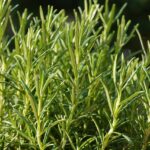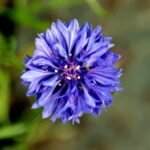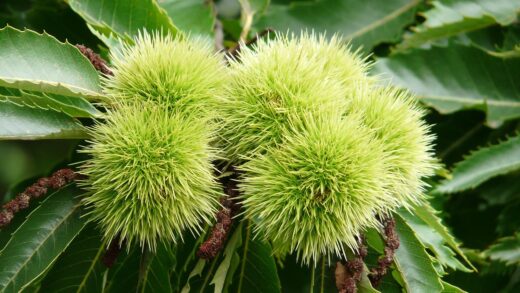The wintering of the dwarf russian almond

Ensuring the Dwarf Russian Almond successfully navigates the challenges of winter is crucial for its long-term health and the promise of a spectacular spring bloom. As a species native to the harsh climates of the Eurasian steppes, it is inherently equipped with a high degree of cold hardiness. However, winter in a garden setting can present unique challenges, such as fluctuating temperatures, drying winds, and heavy snow loads, that differ from its natural habitat. Providing appropriate winter care, therefore, is not about coddling a delicate plant, but rather about mitigating these specific garden-related stressors to help it emerge from dormancy strong, healthy, and ready for the growing season.
The process of winter preparation begins long before the first frost. The care provided to the shrub throughout the late summer and autumn has a significant impact on its ability to withstand the cold. It is important to cease all fertilization by mid-summer. Late-season applications of fertilizer, especially those high in nitrogen, can encourage a flush of new, tender growth that will not have sufficient time to harden off before winter arrives. This succulent growth is highly susceptible to frost damage, which can weaken the plant and create entry points for diseases.
Watering practices should also be adjusted in the autumn. While the plant should not be allowed to enter dormancy under severe drought stress, the frequency of watering should be gradually reduced as the weather cools. This helps to signal to the plant that it is time to slow its growth and begin preparing for winter. One final, deep watering is highly recommended in late autumn, after the leaves have dropped but before the ground freezes solid. This ensures that the root system is well-hydrated, which helps protect it from desiccation in frozen soil during the winter months.
A crucial aspect of winter care is a thorough cleanup around the base of the plant. In late autumn, all fallen leaves, fruit, and other debris should be raked up and removed. This practice of good garden sanitation is vital because this material can harbor overwintering fungal spores and the eggs or pupae of insect pests. Removing this potential source of infection and infestation prevents these problems from re-emerging in the spring and attacking the plant’s new growth, giving the shrub a clean and healthy start to the season.
The importance of mulching
Applying a protective layer of mulch is one of the most beneficial actions one can take to prepare the Dwarf Russian Almond for winter. The primary purpose of winter mulching is not to keep the ground warm, but rather to keep it frozen. It acts as an insulator, moderating soil temperature and protecting the root system from the damaging effects of repeated freeze-thaw cycles. These cycles can heave the soil, breaking and exposing delicate roots, which is particularly stressful for young or shallow-rooted plants.
More articles on this topic
The ideal time to apply winter mulch is in late autumn, after the first few hard frosts have occurred and the ground has begun to freeze. Applying it too early, while the ground is still warm, can delay the plant’s entry into full dormancy and may also provide a cozy haven for rodents like voles, which can girdle the stems of shrubs during the winter. A layer of 3 to 4 inches of an organic material like wood chips, shredded bark, or pine straw is typically sufficient.
When applying the mulch, it is important to create a donut-shaped ring around the base of the shrub, keeping the material a few inches away from the main stem or trunk. Piling mulch directly against the bark can trap excess moisture, which can lead to rot and decay of the crown. This clear space also discourages rodents from nesting right next to the stem, where they are most likely to cause damage.
In the spring, as the threat of hard frost passes and the ground begins to thaw, the winter mulch should be gently pulled back from the base of the plant. This allows the soil to warm up more quickly and encourages the plant to break dormancy and begin its new season of growth. A portion of the old mulch can be left in place and supplemented with a fresh layer to provide the benefits of moisture retention and weed suppression throughout the coming growing season.
Protection from wind and sun
Winter winds can be incredibly damaging to shrubs, including the hardy Dwarf Russian Almond. The constant wind can strip moisture from the stems and branches, a process known as desiccation or winter burn. This is particularly a problem in locations that are exposed and unprotected. The damage often appears in the spring as brown, dead-looking branches, which can disfigure the plant and reduce its flowering potential. Young or recently planted shrubs are especially vulnerable as their root systems are not yet fully established.
More articles on this topic
To protect against winter wind, it may be beneficial to erect a windbreak, especially for shrubs planted in exposed sites. This can be as simple as driving a few stakes into the ground on the windward side of the plant and stretching a piece of burlap between them. It is important that the burlap does not touch the plant itself, as this can cause its own problems with abrasion and moisture trapping. The goal is to filter and deflect the wind, not to create a solid, airtight wall.
Sun protection can also be a consideration, particularly in regions with intense winter sun and reflective snow cover. On bright, sunny winter days, the sun can warm the bark of the shrub, causing the cells to become active. When the sun sets or goes behind a cloud, the temperature can plummet rapidly, freezing and killing these active cells. This can lead to a condition called sunscald, which results in long, vertical cracks and dead patches on the bark, typically on the south or southwest side of the stems.
While sunscald is more common on young trees with thin bark, it can occasionally affect shrubs. Wrapping the main stems of a very young or particularly valuable specimen with a commercial tree wrap can offer protection. For most established Dwarf Russian Almonds, however, this is not necessary. The best long-term strategy is proper siting of the plant in a location where it is not overly exposed to the harshest winter elements without adequate protection from surrounding structures or other plants.
Managing snow and ice damage
Heavy snow and ice accumulation can pose a significant physical threat to the branches of the Dwarf Russian Almond. The weight can cause branches to bend, split, or break off completely, ruining the natural shape of the shrub and creating large wounds that can be susceptible to disease. Multi-stemmed shrubs are particularly at risk, as the weight of snow can cause the main stems to splay outwards from the center, sometimes leading to splitting at the base of the plant.
A preventative measure that can be taken in late autumn is to gently wrap the shrub with twine or strips of burlap. By starting at the bottom and spiraling upwards, the branches can be drawn loosely together, creating a more compact and resilient form that is better able to shed snow and support the weight of any that does accumulate. This is especially useful for younger plants whose branch structure is still developing. The wrapping should be snug but not so tight that it damages the bark or buds.
If a heavy snowfall occurs, it can be tempting to go out and shake the snow off the branches. However, this should be done with extreme caution, if at all. Branches are often brittle when frozen, and shaking or hitting them can cause more damage than the snow itself. It is far better to use a soft broom and gently push the snow upwards off the branches to lighten the load. Never try to remove ice that has coated the branches, as this will almost certainly lead to breakage.
After a winter of heavy snow or ice, it is important to inspect the shrub for damage in the early spring. Any branches that have been broken or cracked should be pruned off cleanly using sharp pruning shears. The cuts should be made back to a healthy, outward-facing bud or to a main branch. This corrective pruning not only removes the damaged wood but also encourages the plant to produce new, healthy growth to fill in the gaps.
📷 Le.Loup.Gris, CC BY-SA 3.0, via Wikimedia Commons

















